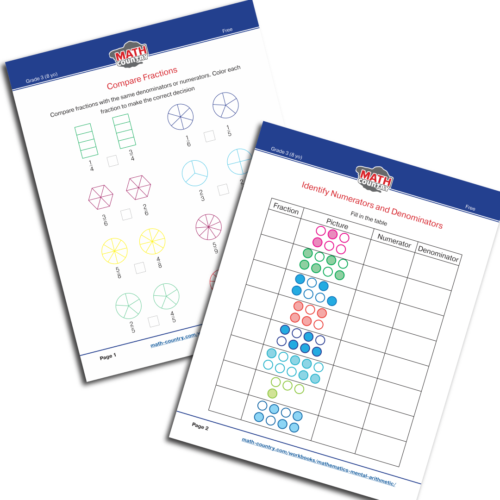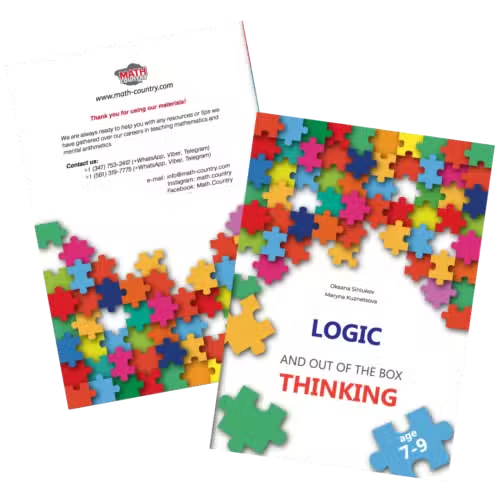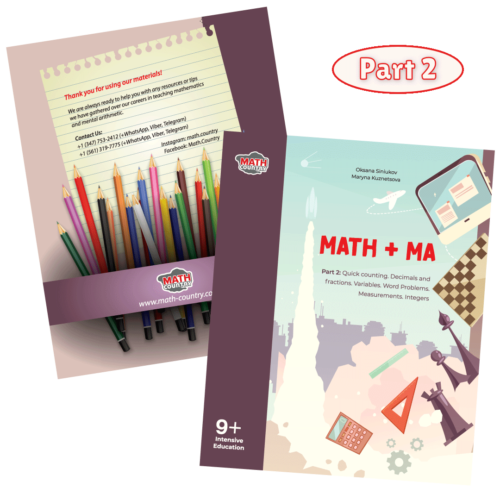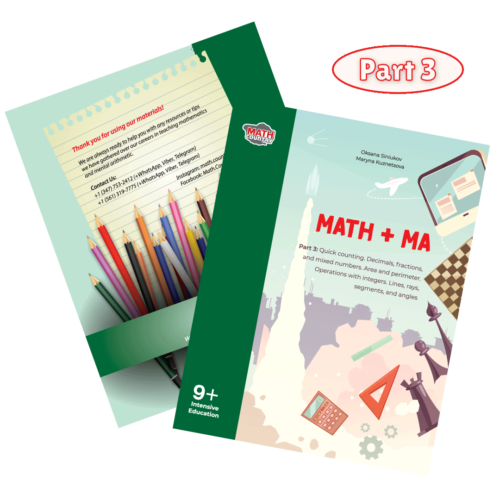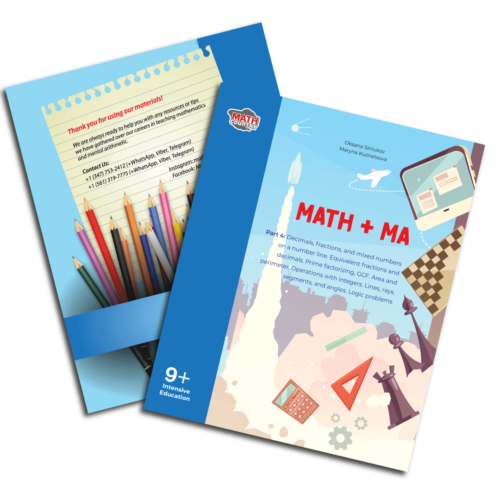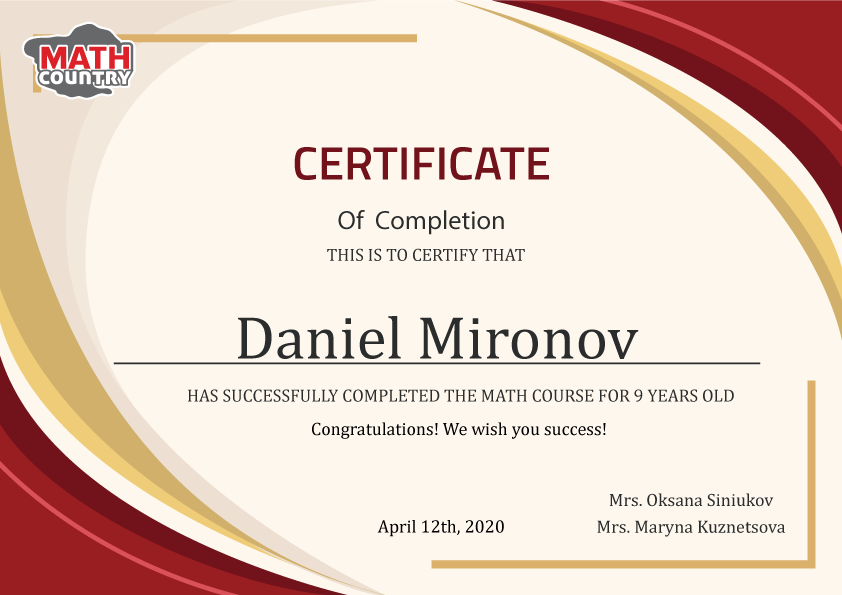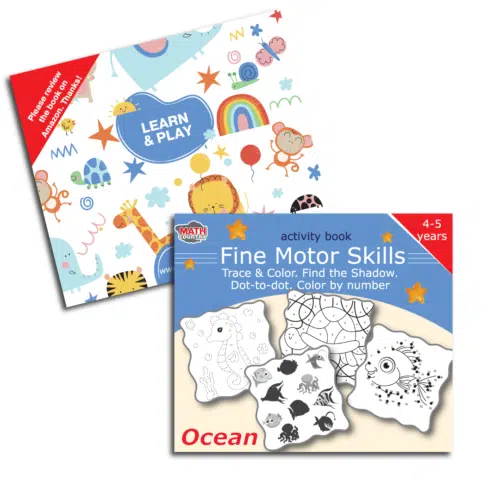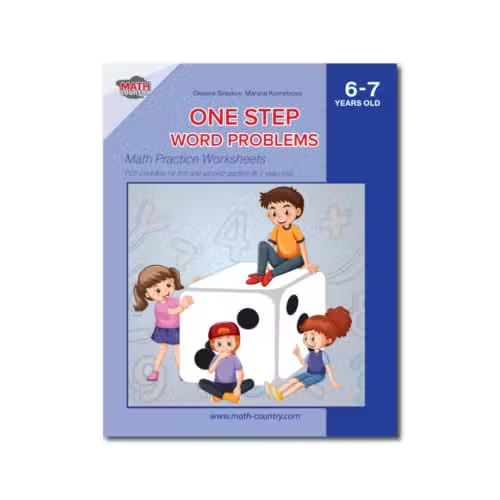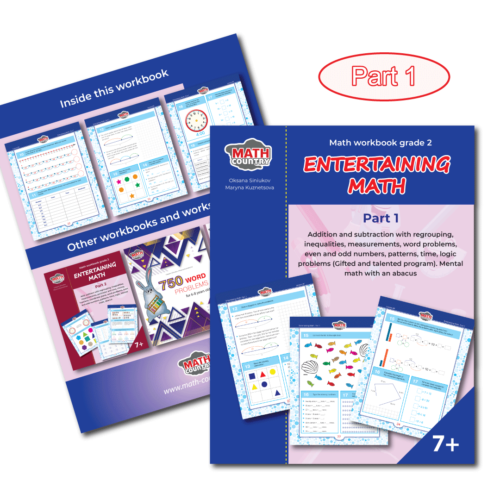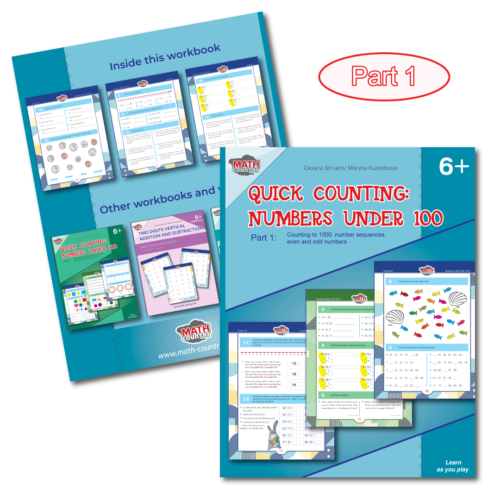Math Workbooks for 4th grade (age 9+)
This workbook series provides excellent instructional material for 4th-grade math lesson plans. We have organized all problems and exercises into lessons with corresponding homework assignments.
- 1
Math+MA Part 1 Workbook
- 2
Math+MA Part 2 Workbook
- 3
Math+MA Part 3 Workbook
- 4
Math+MA Part 4 Workbook
- 5
Multiplication Tables in 12 Lessons Workbook (with word problems)
- 6
Logical Problems Workbook

Solving mathematical problems leads to improvement of logical thinking, consolidates the interest of children in cognitive activity, and contributes to the development of thinking and intellectual development.
Math Country
Math + MA (9+ y.o.)
Math + MA (9+ y.o.)
This series of books for 9 years old children allow each student to establish mathematical relationships between objects, detect relationships in phenomena, process, present information in a symbolic or a graphic form, and design models that reflect various relationships between objects. Students make a comparison on one or more grounds and draw conclusions on this basis; establish a pattern between objects (numbers, numerical expressions, equalities, geometric shapes, etc.) and determine its missing elements. In addition, students learn to classify objects according to proposed or independently found grounds, draw conclusions by analogy and confirm the accuracy of these conclusions, make out simple generalizations, and use mathematical knowledge in an extended field of application. Students grasp primary interdisciplinary subject concepts: number, size, geometric figure; recognize mathematical relations between objects and groups of objects in a sign-symbolic form (on the model); perform an advanced search for information and present information in the proposed form.
Systematic exercises develop such important skills as using acquired mathematical knowledge to describe and explain surrounding objects, processes, and phenomena, as well as to assess their quantitative and spatial relationships. Students practice the basics of logical and algorithmic thinking, improve spatial imagination and mathematical speech, master the basics of counting, measuring, estimating the result, and evaluating it, visualize data in various forms (tables, charts, diagrams), record and execute algorithms.
